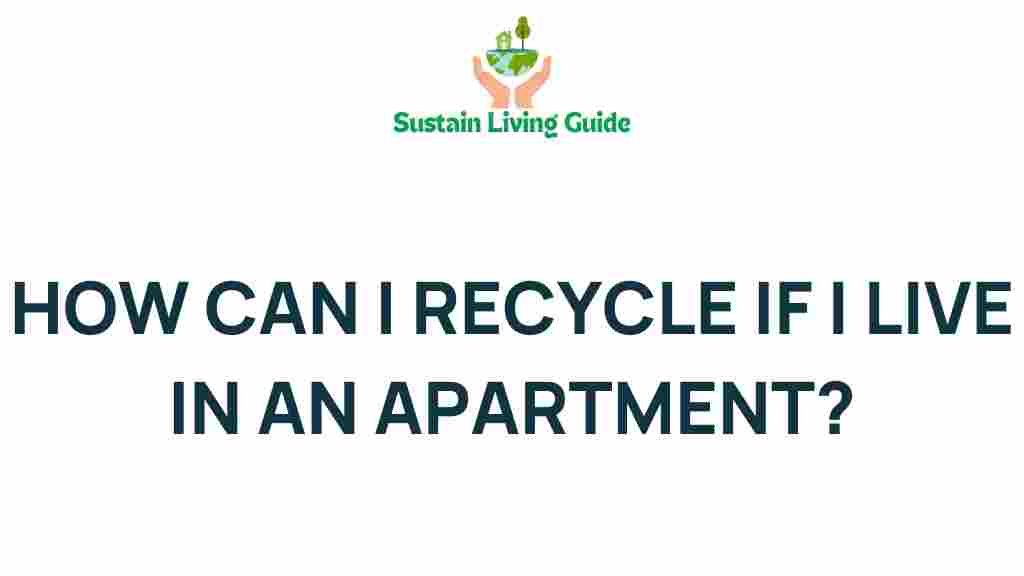Apartment Recycling: Unlocking the Secrets for Sustainable Living
In an era where sustainability is at the forefront of global consciousness, apartment recycling has emerged as a crucial practice for urban dwellers. Living in an apartment often means limited space and resources, making recycling a necessary yet sometimes challenging endeavor. This comprehensive guide will unveil the secrets of apartment recycling, providing you with practical tips, step-by-step processes, and troubleshooting advice to make your recycling efforts effective and efficient.
Understanding Apartment Recycling
Apartment recycling refers to the process of collecting, sorting, and processing recyclable materials generated within an apartment setting. This includes common items such as:
- Paper and cardboard
- Plastic containers
- Glass bottles and jars
- Metals, including aluminum cans
Apartment recycling is essential not only for reducing waste but also for conserving resources and minimizing environmental impact. By recycling, you contribute to a circular economy where materials are reused rather than discarded.
The Benefits of Apartment Recycling
Engaging in apartment recycling comes with numerous benefits:
- Environmental Impact: Reduces landfill waste and decreases pollution.
- Resource Conservation: Saves energy and raw materials needed for new products.
- Community Engagement: Fosters a sense of responsibility and community involvement.
- Cost-Effective: Often leads to lower waste disposal fees for residents.
Step-by-Step Guide to Apartment Recycling
Now that you understand the importance and benefits of apartment recycling, let’s dive into a step-by-step guide to help you start recycling effectively in your apartment.
1. Assess Your Recycling Options
Before you begin, check what recycling programs are available in your area. This may include:
- Your apartment complex’s recycling program
- Local municipal recycling services
- Nearby recycling centers for specific materials
Many cities have designated days for curbside pickup of recyclables, while others may require you to drop off your items at a specific location.
2. Set Up a Recycling Station
Create a designated area in your apartment for recycling. This will help you stay organized and make recycling a part of your daily routine. Consider the following:
- Bins: Use separate bins for paper, plastics, glass, and metals.
- Labels: Clearly label each bin to avoid confusion.
- Accessibility: Place your recycling station in an easily accessible area, such as your kitchen or utility room.
3. Educate Yourself on Recycling Guidelines
Familiarize yourself with your local recycling guidelines. This includes knowing what materials are accepted and how they should be prepared. Common guidelines include:
- Rinsing out containers before recycling
- Flattening cardboard boxes
- Avoiding non-recyclables like plastic bags and food-soiled items
4. Collect and Sort Recyclables
As you go about your daily life, collect recyclables in your designated bins. Regularly sort them to ensure they are ready for disposal. Here are some tips:
- Set a schedule for emptying your bins, such as once a week.
- Keep a small container in your kitchen for easy access.
- Involve family members or roommates to share the responsibility.
5. Dispose of Recyclables Properly
Once your bins are full, it’s time to dispose of your recyclables. Depending on your local guidelines, you may need to:
- Take items to a recycling drop-off center
- Place them in curbside collection bins on designated days
Always double-check that you’re following the correct procedures to avoid contamination.
6. Keep Up with Changes
Recycling regulations can change over time. Stay informed about local updates by subscribing to newsletters or following your city’s waste management program on social media. This will ensure you remain compliant and effective in your recycling efforts.
Troubleshooting Common Apartment Recycling Issues
Even with the best intentions, you may encounter challenges when recycling in your apartment. Here are some common issues and solutions:
1. Limited Space
If space is a concern, consider using collapsible bins that can be stored when not in use. Alternatively, you can designate a corner of your kitchen or balcony for your recycling station.
2. Contamination of Recyclables
Contamination occurs when non-recyclable items are mixed with recyclables. To combat this:
- Double-check your bins regularly.
- Educate housemates on what can and cannot be recycled.
3. Lack of Participation from Roommates
If you live with others, encourage participation in the recycling process by:
- Having a group discussion about the importance of recycling.
- Assigning roles, such as one person responsible for taking out the recyclables.
4. Confusion Over Local Guidelines
If you’re unsure about what can be recycled, contact your local recycling center for guidance or visit their website for detailed information.
Conclusion: Embracing Apartment Recycling for a Greener Future
Apartment recycling is not just a trend; it’s a vital practice that contributes to a sustainable future. By following the steps outlined in this guide, you can effectively incorporate recycling into your apartment lifestyle. Remember, every small action counts, and collectively, we can make a significant impact on our environment.
For more information on sustainable living practices, check out this resource.
Join the movement towards a greener planet by unlocking the secrets of apartment recycling today!
This article is in the category Waste and created by SustainLivingGuide Team
